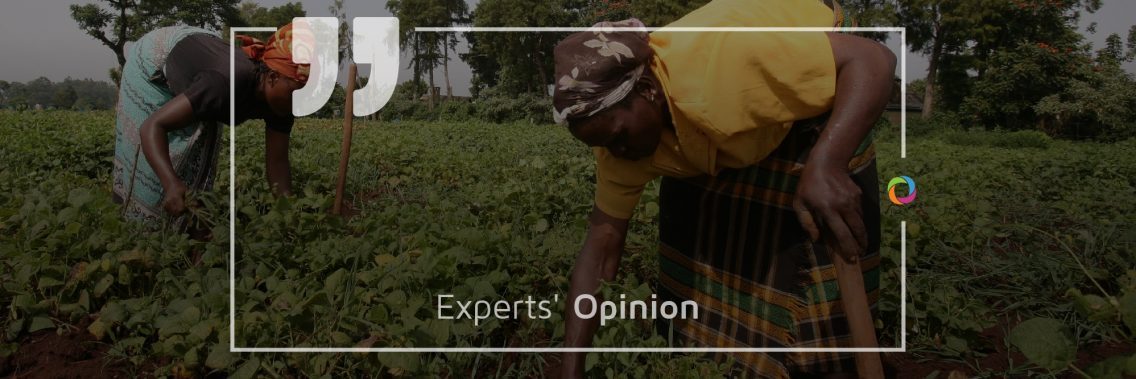Agriculture is the major source of livelihood for the majority of the population of Sub-Saharan Africa but its productivity is not only low, it has also started showing signs of decline since 2012. According to FAO (Food and Agriculture Organisation), in recent years ODA (Official Development Assistance) to the agricultural sector has increased in Sub Saharan Africa and there is more financing available for agriculture than is normally expected. We asked several agriculture experts to share their opinions regarding the connection between foreign aid, agriculture and economic growth in Sub Saharan Africa.
How can foreign aid to agriculture support economic growth in Africa?

„Given the emphasis that agronomic science has placed on the central importance of soil nutrients to increasing agricultural productivity, it is highly relevant to consider how soil nutrient dynamics interact with broader agricultural and economic dynamics. There is, therefore, merit in considering the channels through which publicly financed agricultural input support programs, potentially backed by foreign aid, could generate economy-wide outcomes. Foreign aid should be directed in the following areas – (i) Research (Fundamental and Applied Research), (ii) capacity building of stakeholders, mainly small-scale producers through training on relevant farming practices, organization of peasants’ associations, sensitization, management practices and leadership, fundraising, etc.; (iii) market opportunity identification, value chain analysis; etc.”

„Foreign aid to agriculture can sustain economic growth in Africa if the funds are managed sensibly. These funds must be invested in structuring projects that provide rural jobs such as hydro-agricultural development projects for the development of rice farming market gardening, fruit arboriculture, fishing, electrification, fish farming and pastoral facilities for the promotion of livestock. The development of small and medium-sized enterprises (small and medium enterprises) in agriculture for the benefit of rural women will ensure certain empowerment of producers. ODA must be invested in the development of agri-food industries to process agricultural products locally. For example, in 2015, of the 600,000 tons of mangoes produced in Mali alone, 6% were exported. The country does not have processing units capable of absorbing its production which constitutes a considerable shortfall for the already agonizing Malian secure economy crisis.”
What needs to change in the agricultural sector in Sub Saharan Africa to boost economic growth?

„Funders, whether private or public, have largely maintained a priority-based funding model driven by their own development motivation from host governments or stakeholders with little to no cooperation, collaboration or partnerships with other funders active in the same host communities. The result has been fragmented efforts by funders and a failure to leverage resources for concrete economic growth despite an increase in ODA in the agricultural sector. It is very unlikely that a single donor will be able to address the multiplicity of challenges hampering economic growth in the agricultural sector. However, the overall increase in funding flow into this sector is significant enough to make a noticeable long-term difference if this funding is coordinated with clear partnership strategies in each location of interest to avoid duplication and uncoordinated efforts. This change in focus and approach will promote collaboration and partnership effectiveness on the ground and help to boost economic growth.”

„There is a need to change the land tenure system such that agricultural land is clearly demarcated and secured against sub-division into uneconomical parcels. This should go hand in hand with clear agro-ecological zoning with the aim of focusing production on the best-suited land usage. As of now, there is too much mixing of several crops and even animals prevent specialization and the attendant benefits of focused expertise. There seems to be too much glorification of small-scale producers or production in Africa. This is tantamount to glorifying poverty and inefficiency. The focus should change to more commercial agriculture and the creation of value and sustainable jobs for the population. This way resources can be better targeted for improved productivity. This will result in more economic empowerment and food security.”

„Strengthening the agriculture value chain, coupled with expanded models of land-use and rural infrastructure, improvement in policy, access to extension services, access to affordable bank loans, market information and market infrastructure, the development of intra-African agriculture trade, compliance with international standards are needs that all need to be promoted. Increasing agricultural productivity will enable the workforce to move from the agriculture sector into other sectors (industry, services etc.) and allow farmers to better manage and integrate the entire agricultural value chain and eventually take advantage of larger markets. Efforts must be continued to make effective the commitment made by the Heads of States and Governments to allocate at least 10% of annual budgetary resources to revitalize the agricultural sector and to implement the New Partnership for Africa’s Development’s (NEPAD) Comprehensive Africa Agriculture Development Program (CAADP).”
More than 70 job opportunities in agriculture in Africa have been posted today here.

